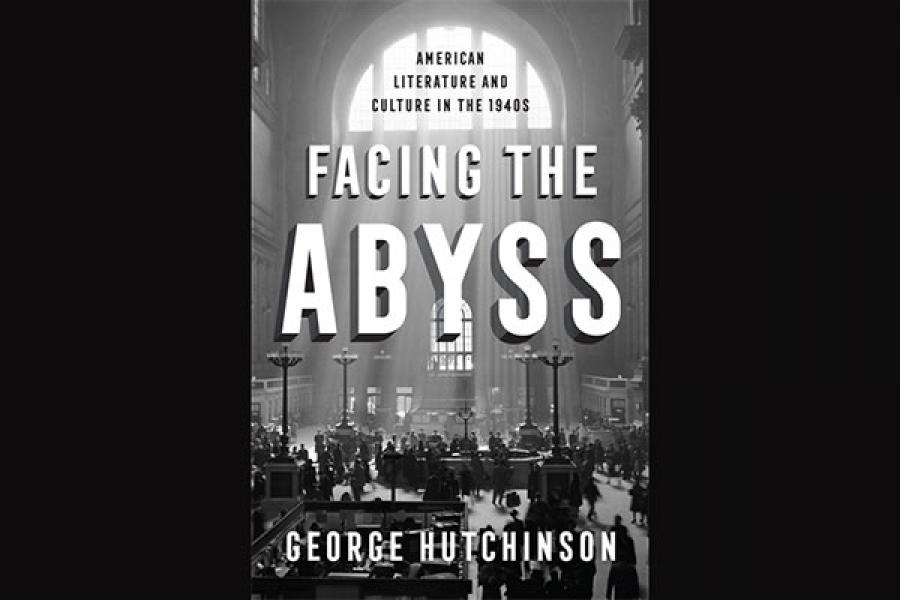The 1940’s saw Nazi concentration camps, the atomic bomb, and the U.S. invasion of South Korea: a pivotal era by any yardstick. In his new book, “Facing the Abyss: American Literature and Culture in the 1940s,” George Hutchinson asks how these epochal moments resonated in literary culture, and how artists brought shape and meaning to the world in the wake of such overwhelming events.
Although hundreds of books have addressed the military, political and cultural history of the U.S. during the 1940s, the decade “has been the black hole of American literary history,” writes Hutchinson, Newton C. Farr Professor of American History and Culture in the Department of English.
“My aim was to discover the distinctive themes, motifs, and aesthetic tendencies of a murky period in American literature but a momentous one in ‘History’ and how these both refracted and bore witness to the times,” writes Hutchinson, director of the John S. Knight Institute for Writing in the Disciplines and George Reed Professor of Writing and Rhetoric.
Hutchinson notes that academics of the time, looking at their own decade, found the literature wanting. They didn’t feel that their literature sufficiently wrestled with the enormous challenges of the era. Hutchinson’s goal with “Facing the Abyss,” he says, is to change that narrative of failure and show how much the writers of the 1940s accomplished. For example, he points out, the era gave birth to film noir, abstract expressionism, and what later would be called postmodernism.
But the literary culture of the time reflects little sense of accomplishment or triumph, writes Hutchinson. “Instead, the dominant emotion is a new sense of dread, a haunting sensation of
radical evil both without and within.” In that environment, writers explored ecological concerns, the survival of the human race, as well as existential guilt and the nature of “man,” writes Hutchinson.
The book is organized around themes that remain relevant to American culture today. In examining the interrelationships of those themes, Hutchinson also addresses changes in literary form, the melding of realism with surrealism, and the interplay between modernist abstraction and vernacular forms. As he writes, “both thematically and institutionally, literature worked in close relationship with other realms of artistic and intellectual endeavor that were part of
what might be called the ‘literary ecology’ of this extraordinary period.”
In their review, Library Journal described “Facing the Abyss” as “A cross-genre study that illuminates common ideational content drifting across American culture in that tumultuous decade,” adding that “Hutchinson's study bodes fair to become a classic in the field of American literary studies.”
Hutchinson’s other books include “The Harlem Renaissance in Black and White” (1996) and “In Search of Nella Larsen: A Biography of the Color Line” (2006).





